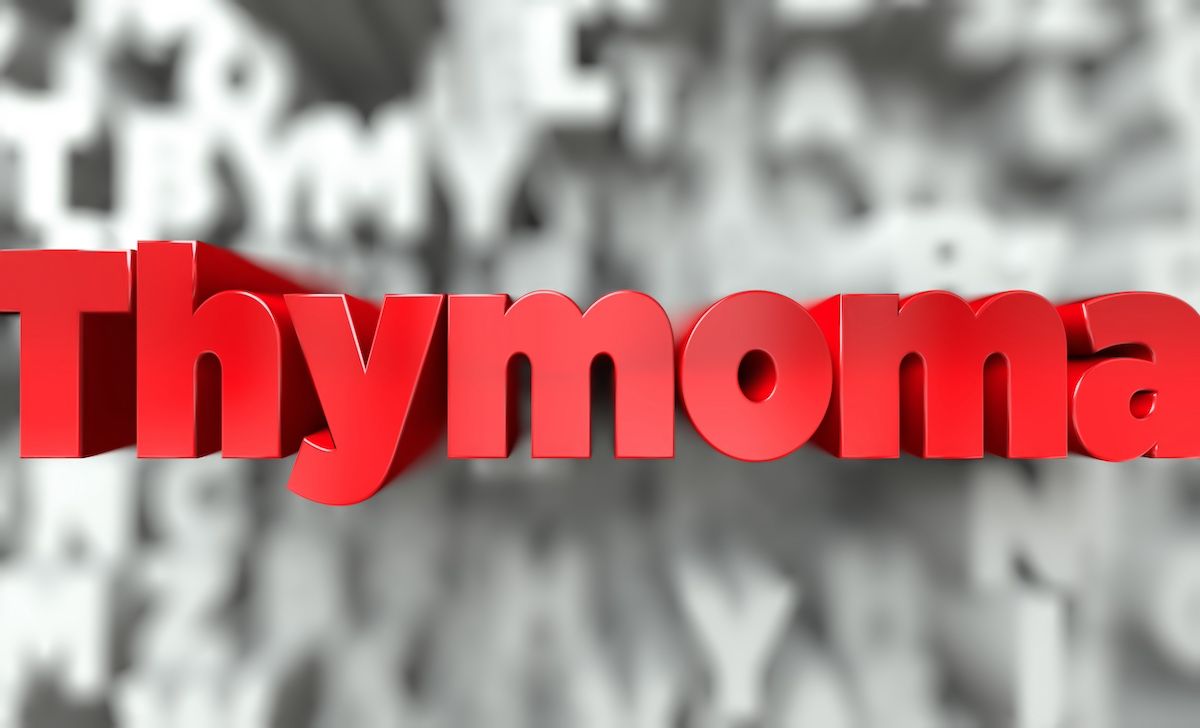- Center on Health Equity & Access
- Clinical
- Health Care Cost
- Health Care Delivery
- Insurance
- Policy
- Technology
- Value-Based Care
Myasthenia Gravis: No Impact on Thymoma Outcome
A new study has found that myasthenia gravis does not affect the long-term prognosis of patients with thymoma.
A new study published in Frontiers in Medicine challenges the traditional view that myasthenia gravis (MG) negatively impacts thymoma prognosis due to perioperative complications. The study utilized a propensity score-matching analysis to address confounding factors and accurately assess the impact of MG on thymoma prognosis.1
The study analyzed the clinical and pathological data of 509 patients who underwent surgical treatment for thymoma between January 2010 and October 2023. Of these, 104 patients had thymoma combined with MG (MG group), and 405 had thymoma alone (non-MG group). Follow-up was done via telephone calls or outpatient visits, over a median duration of 85 months (range, 1-165).
Propensity score matching was used to create comparable subsets of 96 patients. This matching aimed to balance confounding factors such as sex, age, and tumor stage, which can significantly affect long-term survival and prognosis interpretation. The study observed the 10-year survival and recurrence-free survival (RFS) rates, clinical features, and potential prognostic factors.
Myasthenia gravis likely does not affect the long-term prognosis of patients with thymoma, according to the authors of this study | Image Credit: Chris Titze Imaging - stock.adobe.com

Before matching, the 10-year survival rates for the MG and non-MG groups were 93.8% and 98.4%, respectively, while the RFS rates were 85.9% and 93.4%. After matching, the survival rates were 96.9% for the MG group and 97.7% for the non-MG group, with corresponding RFS rates of 86.9% and 91.1%. There was no statistically significant difference in survival curves between the groups (P > .05).
The study conducted univariate and multivariate analyses to identify prognostic factors for thymoma recurrence. Univariate analysis revealed that World Health Organization (WHO) histopathological classification (HR, 0.431; 95% CI, 0.199-0.935, P = .033), Masaoka–Koga stage (HR, 3.561; 95% CI, 1.668-7.605; P = .001), tumor node metastasis (TNM) stage (HR, 2.882; 95% CI, 1.269-6.546; P = .011), resection status (HR, 4.104; 95% CI, 1.422-11.845; P = .009), and postoperative adjuvant therapy (HR, 4.672; 95% CI, 1.422-11.845, P = .001) were potentially associated with tumor recurrence. Multivariate analysis further demonstrated that the Masaoka–Koga stage and postoperative adjuvant therapy independently predicted recurrence risk. Specifically, the Masaoka–Koga stage had an HR of 3.307 (95% CI, 1.012-10.812; P = .048), while postoperative adjuvant therapy had an HR of 3.712 (95% CI, 1.491-9.239; P = .005).
Clinical features of the MG and non-MG groups showed no significant differences in the Masaoka–Koga stage, TNM stage, or resection status (P > .05). However, the MG group exhibited a smaller mean (SD) tumor diameter (5.5 [2.3] cm vs 6.2 [2.8 cm]; P = .012) and a higher prevalence of B2 histological type (42.3% vs 23.5%; P < .001). Surgical approaches differed significantly between the groups, with median sternal incision being predominant in the MG group, whereas thoracoscopic minimally invasive surgery was more common in the non-MG group (P =.001). Additionally, the MG group had a higher proportion of female patients (57.7% vs 46.2%; P = .036) and a lower mean age at diagnosis (47.6 [12.2] years vs 51.4 [11.9] years; P = .004).
MG is the most common paraneoplastic neurological disease in patients with thymoma, affecting approximately 30% to 50% of the individuals. These results align with recent reports suggesting that MG does not detrimentally affect and may even improve thymoma prognosis.2
“There was no difference in prognosis in patients with thymoma with or without MG,” the authors stated.
They emphasized that the Masaoka–Koga stage remains an independent prognostic factor affecting RFS in patients who have thymoma, while postoperative adjuvant therapy is a poor prognostic factor. However, the authors noted the difficulty of conducting randomized controlled trials for such rare conditions and highlighted the importance of large-scale multicenter studies to validate these findings.
References
1. Zhao K, Liu Y, Jing M, et al. Long-term prognosis in patients with thymoma combined with myasthenia gravis: a propensity score-matching analysis. Front Med. 2024;11:1407830. doi:10.3389/fmed.2024.1407830
2. Zhang Y, Yu L, Ke J. Pathological features and prognosis of thymoma with or without myasthenia gravis. Front Surg. 2022;9:726673. doi:10.3389/fsurg.2022.726673
